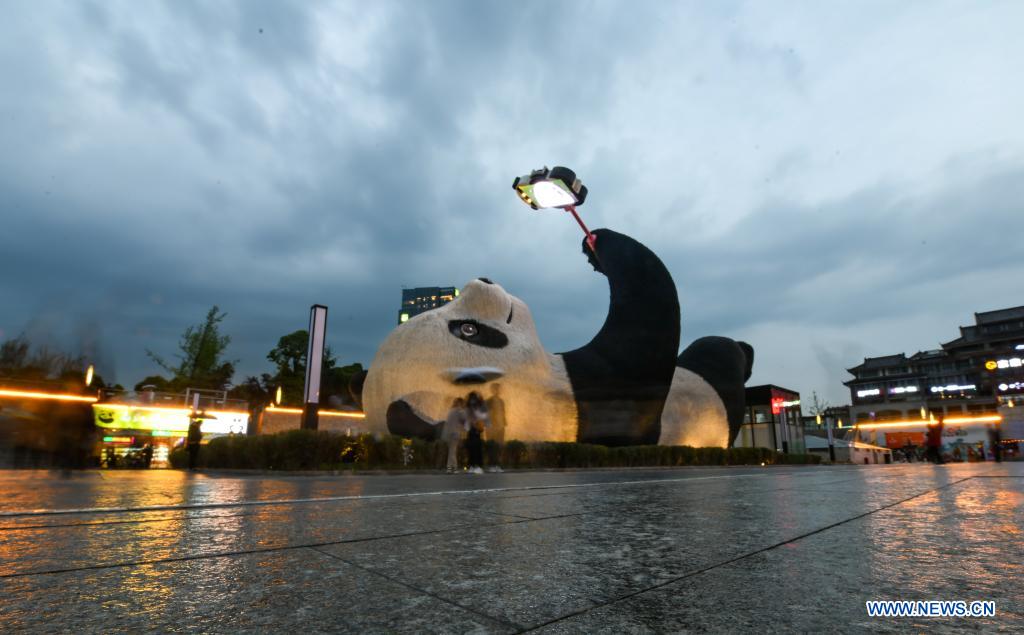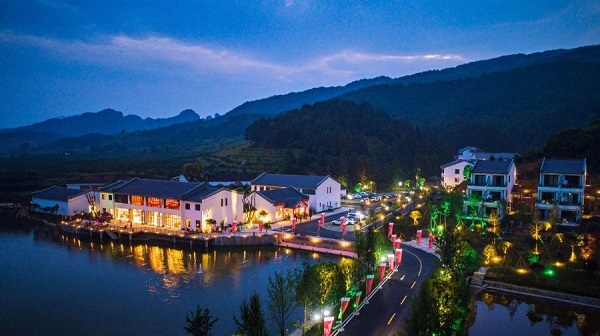Quake-hit Yushu pursues green growth 11 years on
XINING, March 9 (Xinhua) -- Massive rebuilding efforts have reshaped Yushu, 11 years after an earthquake hit the prefecture in northwest China's Qinghai Province.
The remote region in the Qinghai-Tibet Plateau is seeking green development amid plans to increase its connections with the neighboring Sichuan and Tibet areas and integrate development in rural and urban areas, according to the prefecture's five-year development plan from 2021 to 2025.
At the ongoing fourth session of the 13th National People's Congress, President Xi Jinping applauded local efforts to coordinate ecological protection, economic development, and the improvement of people's livelihoods.
On April 14, 2010, a 7.1-magnitude earthquake struck Yushu, flattening the plateau town of Gyegu and killing more than 2,600 people.
Xi went to Yushu after the quake to visit the disaster-hit residents and inspected post-quake recovery efforts.
"I have been very concerned about Yushu," Xi said when he joined a deliberation with lawmakers from the Qinghai delegation on Sunday. "I'm pleased to hear of its rapid development after the quake. I believe Yushu will be an even better place."
Cai Chengyong, deputy Party chief of Yushu prefecture, said post-quake reconstruction has driven the flow of people, logistics, capital, and information in Yushu. "It has also attracted entrepreneurs and tourists."
Rebuilding started shortly after the quake. Thanks to a nationwide effort led by the central government, a total of 44.8 billion yuan (about 6 billion U.S. dollars) was poured into the highland town within three years, which amounted to eight times the total investment of the 58 years before the quake since Yushu's establishment.
A new Yushu has since risen from the plateau, with new roads, schools, hospitals, sports centers, and a more powerful grid network.
Over the 10 years since the quake, Yushu used over 75 percent of its annual fiscal funds in sectors concerning people's well-being, such as roads and medicare in remote herding areas.
Beijing, the capital city that is paired to aid the rebuilding of the prefecture, has invested about 4.16 billion yuan in the past five years for Yushu's poverty alleviation and other development programs.
Nearly 130,000 impoverished people in Yushu have since shaken off poverty. The per capita disposable income in rural areas of Yushu exceeded 9,800 yuan in 2020.
Compared with a decade ago, Yushu is now an even more attractive tourist hotspot. In 2019, Yushu received some 1.5 million tourists, up from no more than 100,000 before the quake.
Traditional crafts of local people also mushroomed, partly due to the rising demand from tourists.
Baima Chogar is a specialist in Tibetan black pottery, a national intangible cultural heritage. He has taught trainees, most from poverty-stricken households, in recent years.
Baima Chogar said the craft has been included in the training programs for the ecological protection and construction of the Sanjiangyuan area, home to the headwaters of the country's three major rivers.
The craft workshop founded by him organizes three or four month-long training courses each year. The trainees can get a subsidy of 6,000 yuan during the training, and they can also work in the workshop after completing the courses, earning a monthly salary up to 6,000 yuan.
"I hope the craft will help more people raise their income and live a better life," he said.
Photos
Related Stories
Copyright © 2021 People's Daily Online. All Rights Reserved.










